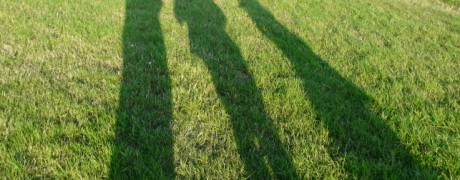Q. Who are you and what do you do?
I’m a playwright and dramaturg and spend a lot of time looking at how writing for performance is created, where it can lead or structure a process, and how writers can fit into new disciplines by bringing a dramaturgical (compositional) perspective on the whole.
Q. Who else is taking part in your process and what do they each bring?
I’m working with Mick Petts, who I’ve been calling a ‘landform artist’ when other people have asked me what he does – though perhaps I need to ask him what his own label is! Mick has a fascinating knowledge of natural processes such as ecology, the environment, how to ‘treat’ natural materials to allow us to sculpt, mould, carve or create works of art from them and alongside them. He’s a great geographical enquirer too, a real delver as far as I can tell, and he brings a new perspective on thinking about and working with sites and spaces, and what the ‘story’ of a space might be or become.
I’m also working with director Rachel Aspinwall who is bringing incredible vision, ambition and scale to our ideas whilst also navigating Mick and I down lines of enquiry that can keep us connected as a trio. Both have a wealth of experience in their own fields, and they’re also both excitable and obsessive which is fantastic for these early stages of ideas creation!
Q. What do you think you’ll be doing over the given time and how might you be working together?
We’ll be exploring various outdoor spaces in Bristol by sharing our different artistic approaches, mining them for their potential to host a new piece of landform art in the future around which we can build new mythologies reconnecting people to the earth in some way. I think we’ll be talking a lot about one another’s processes, previous work, what drives us, what inspires us, what is switching us on about the project and so on.
I’m looking forward to getting my hands and feet dirty in some outdoor spaces and carrying out some physical activity with materials and spaces – switching on those parts of a writer that are too often left dormant in front of the computer screen. I want to be put into Mick and Rachel’s heads and see the project from their perspective, as well as inviting them to see it from my perspective too. We’re learning one another’s creative vocabulary too, which is not only intriguing but also makes it easier to communicate clearly with one another about what we want to pursue.
Q. Where do you hope the process might take you individually and collectively?
Individually, I want to be taken outdoors and outside my normal sources of inspiration. I want to push the form and scale of my writing and exercise some new logistical approaches to co-creating work with other artists, and alongside sites and their connected communities. I want to get better at waiting and listening and wondering, rather than running with the first choices I come up with.
Collectively I hope we reach a stage where we’re able to communicate more and more clearly, understand better what skills we can share and borrow, and create a lasting and impactful piece of art and mythology with the communities of Bristol that can reconnect them to the joys of being within the natural world. So just some small aims!
Q. Why does it feel important to make this work now?
We’re getting more and more tied into the digital and technological age and the structures of our lives don’t necessarily allow for engagement with the outdoors anymore. It’s something we do on holidays or special occasions rather than something we think about and appreciate day-to-day. Even these early R+D conversations and field trips have suddenly ignited child-like and (possibly) embedded responses to the land that we’d each forgotten were there.
That possibility of transformation, of being taken outside the urban and man-made into a natural environment which releases part of you that’s been dormant is an exciting prospect, and links into much bigger questions about stewardship of the Earth and finding ways to work with it – rather than simply treating it as another utility available for human beings to mine whatever they want to take.
< GO BACK
